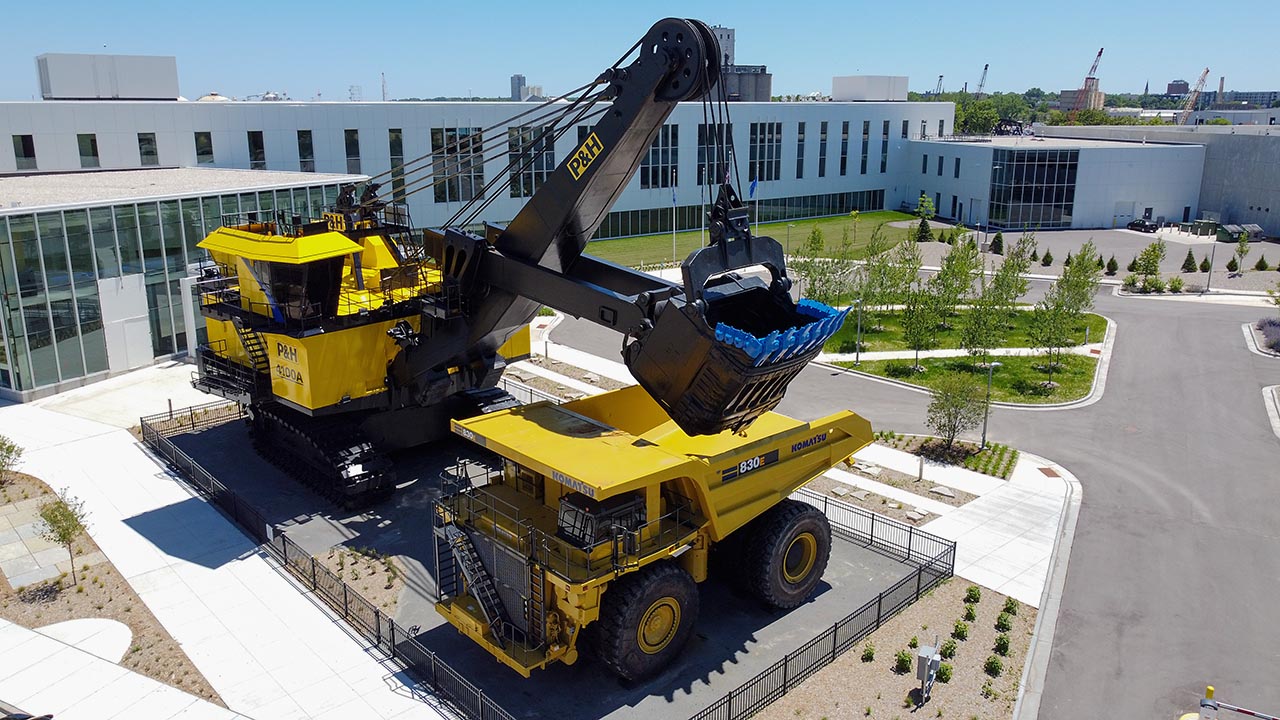3 min read
Komatsu supports reforestation at New River Gorge National Park and Preserve
- Sustainability,Blog,Social responsibility
3 min read

Today, all business organizations are responsible for being good environmental stewards. When the decision was made several years ago to move from Komatsu’s existing National Avenue facility to a new location in the South Harbor area of Milwaukee, sustainability was top of mind. The result is an innovative building and dynamic campus that delivers sustainable solutions, energy efficiency and opportunities to learn about the past, present and future of the mining industry.
Raising the sustainability bar
The new Komatsu $285M campus features a three-story, 180,000-square-foot office building and a 430,000-square-foot manufacturing space. The facility produces the major components of large mining machines, including electric rope shovels, hybrid shovels, draglines and blasthole drills. The location serves as the large gearing center of excellence and the large fabrication and machining center of excellence for Komatsu’s global mining division. Best of all, the new location features cutting-edge sustainability technology that reflects our commitment to the environment.
Some key highlights:
Sustaining communities too
Sustainability and community go hand in hand. This new gem in Milwaukee’s South Harbor district also reaffirms our commitment to southeast Wisconsin for another generation. Komatsu and its predecessor companies have a long history in this city, beginning with the Pawling & Harnischfeger Machine and Pattern Shop, which first opened for business in Milwaukee in 1884. As the new campus was being designed, the overarching community goal was to maintain and support Milwaukee’s history as a manufacturing stronghold, building together for a strong future.
Part of that mission is expanding employment opportunities in the region. With this facility, Komatsu aims to create new family-sustaining jobs so that our total employment in the area reaches approximately 1,000 (currently, we employ about 600 workers).
This vibrant facility strengthens and expands our connection to the community in other ways, providing open spaces for sustainability education — and some fun. Besides the positive economic impact, there are adjacent public spaces, including the Milwaukee RiverWalk and Harbor View Plaza park, an expanded green space, a customer experience center and a company store.
With state-of-the-art technology, a strong community connection and a commitment to sustainability, Komatsu is excited to make this campus our new Milwaukee home.
Several family-friendly and interactive educational stations are installed throughout the outdoor walkways. Visitors and families can stop and discover how wind and solar sustainability technology works, learn about Komatsu’s global environmental efforts, and even get practical tips on what they can do at home to conserve energy and water. We also have additional information and some activity sheets that expand on each of the stations. The four stations:
Komatsu’s history in Milwaukee dates to the origin of the P&H brand in 1884, started by Alonzo Pawling and Harnischfeger. The evolution of the brand highlights its product development and accomplishments through understanding customer needs and combining that insight with working knowledge.
Products/technology